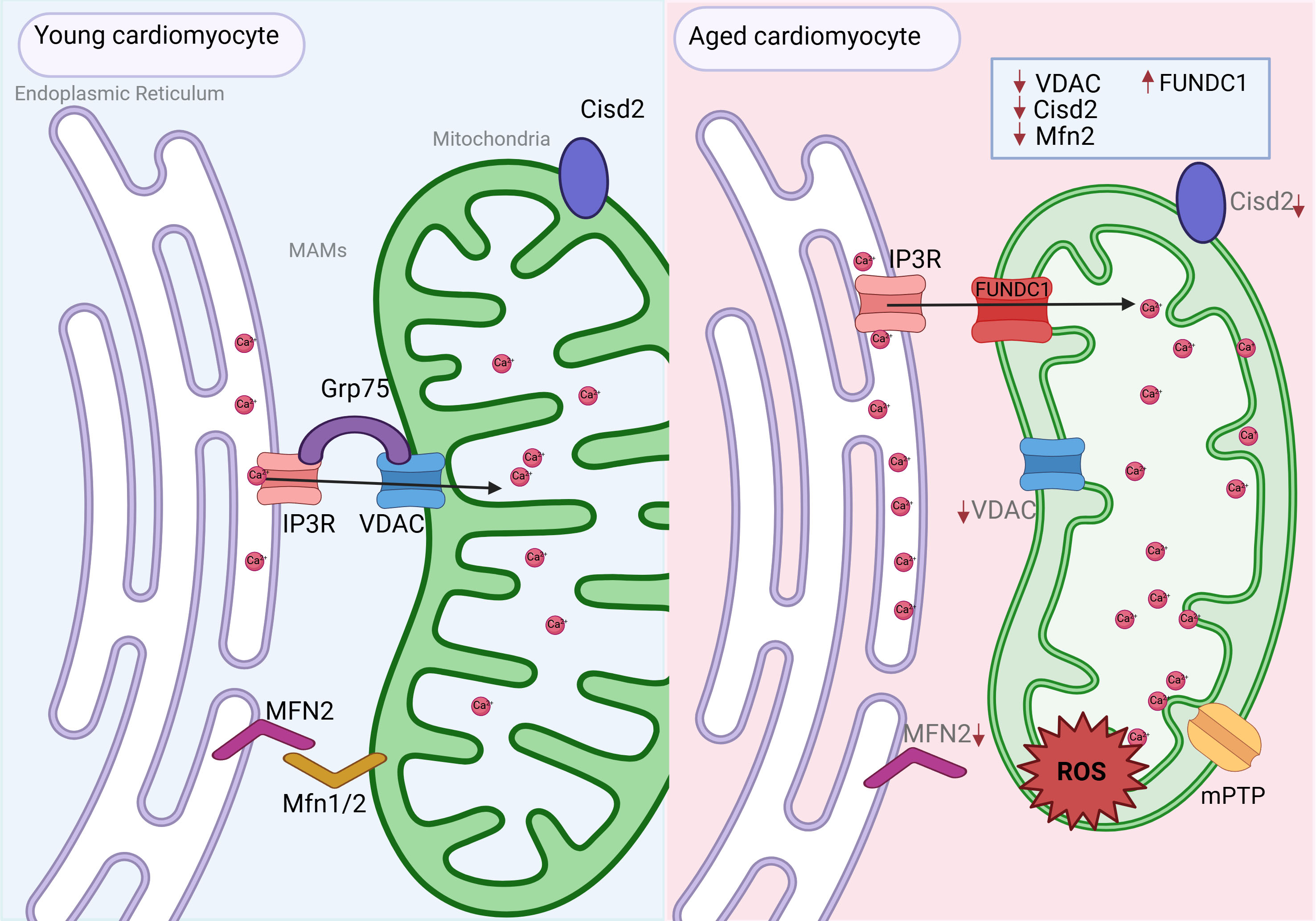fig3
Figure 3. Age-associated alterations in mitochondria-associated ER membranes (MAMs) in cardiomyocytes. Under physiological conditions (young heart), MAMs facilitate proper communication between the sarcoplasmic reticulum (SR) and mitochondria, enabling efficient Ca2+ transfer, lipid exchange, and mitochondrial dynamics. This supports optimal ATP production, controlled autophagy, and cardiomyocyte survival. Key structural and regulatory proteins such as MFN2, VDAC1, and CISD2 maintain MAM integrity and mitochondrial function. In contrast, aged cardiomyocytes exhibit disrupted MAM architecture, characterized by reduced MFN2 and CISD2 expression and increased levels of FUNDC1. These changes lead to impaired SR-mitochondria communication, excessive mitochondrial Ca2+ uptake, oxidative stress, mitochondrial fragmentation, and bioenergetic failure. The resulting mitochondrial dysfunction and accumulation of damaged organelles contribute to cellular senescence and increase the heart’s susceptibility to age-related diseases such as heart failure and diabetic cardiomyopathy.









